
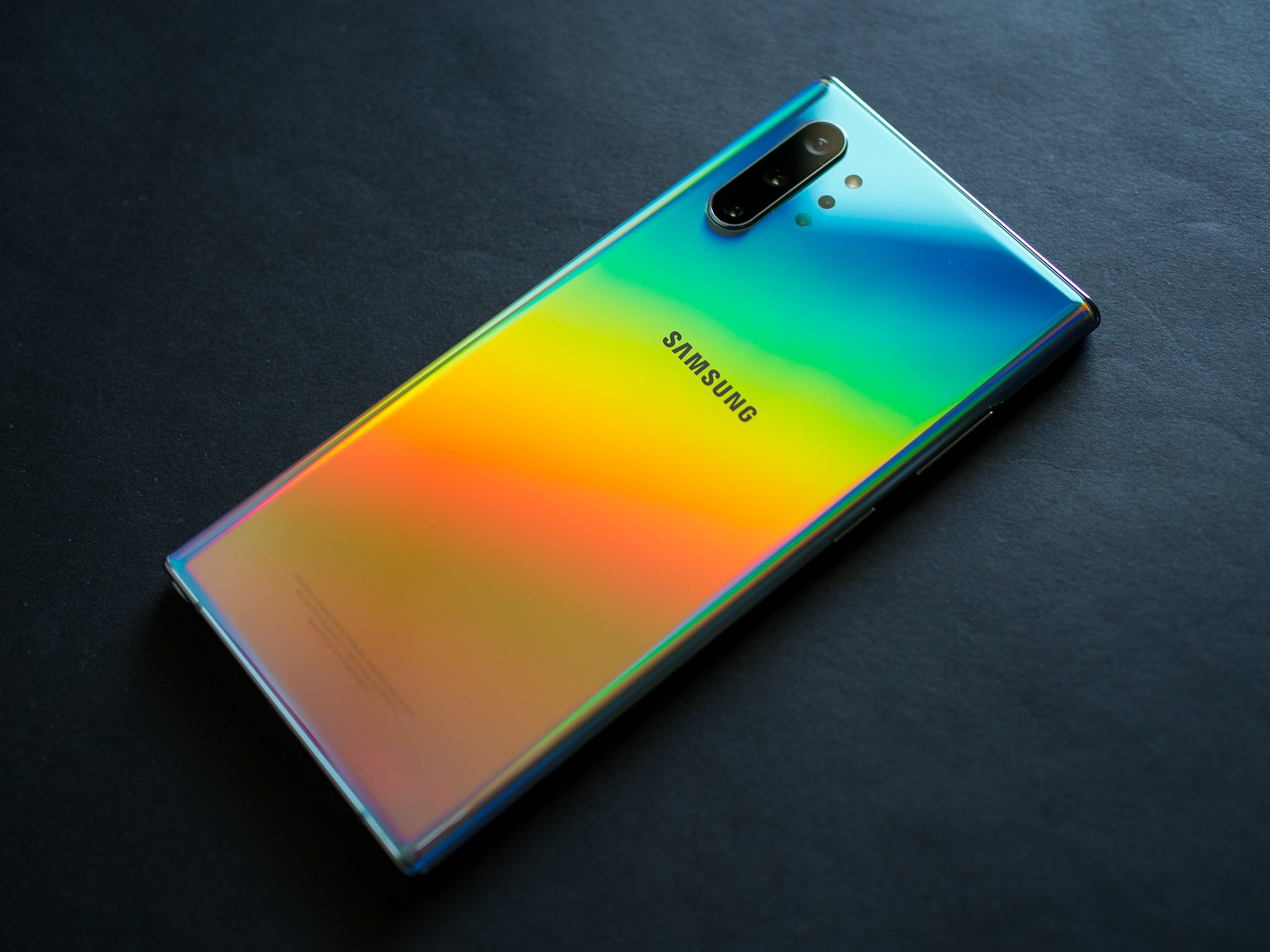 Source: Harish Jonnalagadda/Android Central
Source: Harish Jonnalagadda/Android Central

 Source: Harish Jonnalagadda/Android Central
Source: Harish Jonnalagadda/Android Central
I’ll be frank: I wasn’t particularly interested in the Galaxy Note 10+ when it debuted four months ago. But once I started using the phone, I was immediately hooked. The Note 10+ doesn’t have a 90Hz panel or any groundbreaking new camera features, with Samsung choosing to focus on fast charging and design.
The gradient pattern makes the Note 10+ immediately stand out — it’s one of the prettiest phones Samsung has made to date — and the 45W fast charging combined with a massive 4300mAh battery lets you use it for longer. The S Pen has also picked up new features, and overall you get the best hardware money has to offer.
Samsung has delivered the Android 10 update to the phone at the end of December, bringing its latest UI refresh, One UI 2.0. The interface has meaningful updates that make it even better, and it’s astonishing to see how far Samsung has come in this area in the last two years. Here’s what I think of the Galaxy Note 10+ after four months of usage.
Bottom line: The Galaxy Note 10+ has all the features you care about. The large AMOLED panel sets the standard for the industry, the internal hardware is rock-solid, and you get reliable cameras, all-day battery life, and 45W fast charging. Combine that with regular software updates and new feature additions and it’s easy to see why the Note 10+ is one of the best phones around.

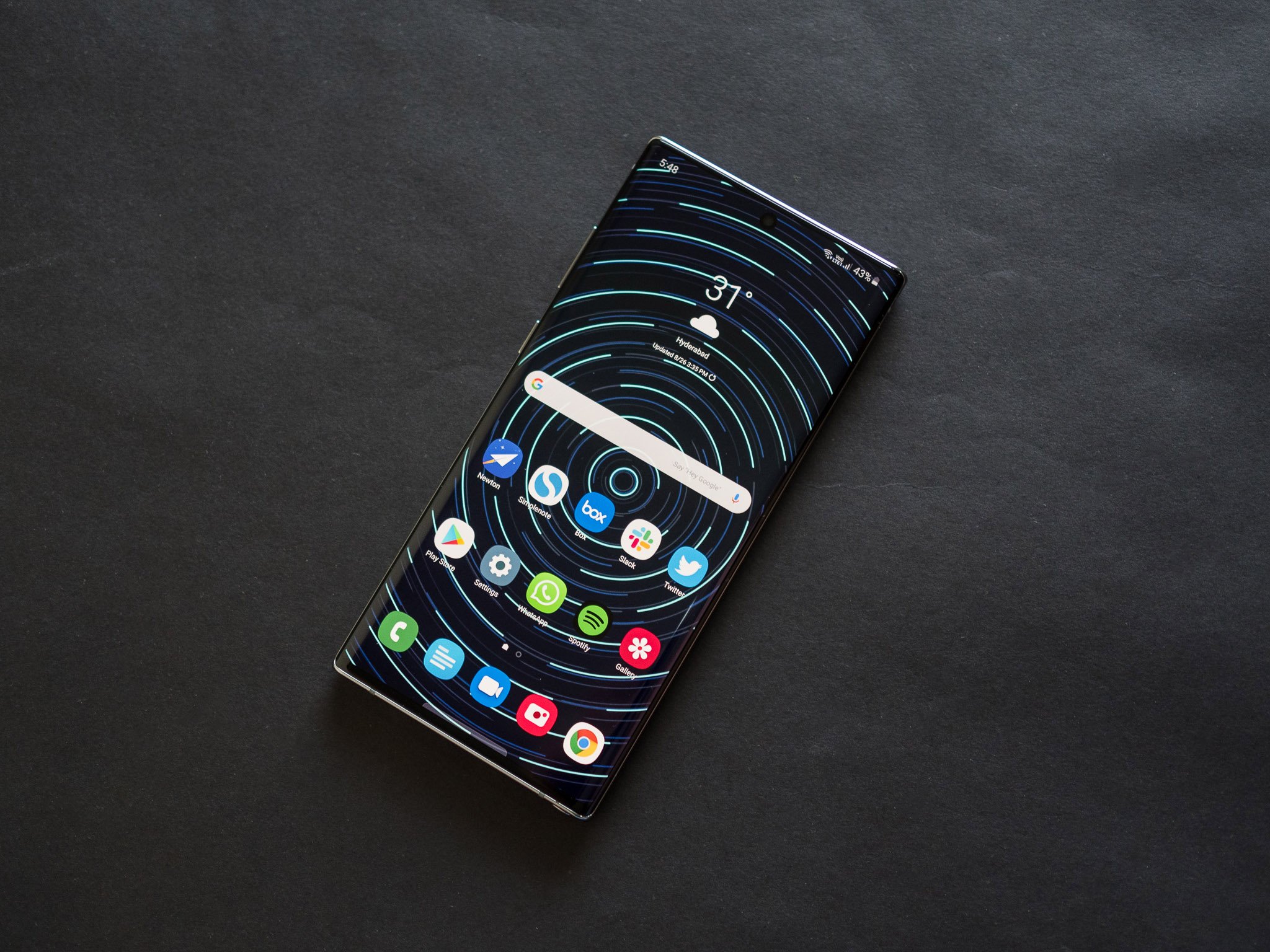

One of the main reasons I use a Samsung flagship year after year is the AMOLED display. Like I said with the Galaxy Note 8 and last year’s Galaxy Note 9, Samsung continues to make sizeable gains in display quality with its Note series.
Sure, Samsung played it safe this year by going with a 60Hz panel instead of a 90Hz screen, but in terms of panel quality, there isn’t a phone today that comes close to the Note 10+. Interacting with the display on a day-to-day basis is an absolute delight — you get incredibly vibrant colors, excellent contrast levels, and great viewing angles. I’m not exaggerating when I say that this is the yardstick for mobile displays.
Samsung delivers an outstanding display year after year, and the Note 10+ continues that legacy.
Samsung also made significant changes to its design language with the Note 10+. Previous devices in the Note series leveraged Samsung’s industrial design, but they never really stood out. That isn’t the case with the Note 10+, with the Aura Glow edition one of the most vibrant designs you’ll find anywhere today.
The U.S. market doesn’t get the crazy designs that are common in Asia, but Samsung has done a masterful job with the gradient pattern on the Note 10+. The mesmerizing colors immediately grab your attention, and while they may not be to everyone’s tastes, I love what Samsung has done here. The Note 10+ is the widest and tallest phone I’ve used in a long time, and while it took a while to get used to the bulk, I liked using the giant 6.8-inch screen.
Another positive design change is the positioning of the front camera cutout. The Note 10+ has a single camera at the front, and the fact that it is centered makes it far less distracting. The positioning of the cutout also ensures that the status icons are no longer pushed to the right. It may not seem like a big deal, but it makes a huge difference in day-to-day usage. The cutout on the S10+ was plain distracting, and that’s not an issue on the Note 10+.
The Galaxy Note 10+ may not have many groundbreaking features, but Samsung’s ability to iterate and deliver marginally better features with every generation means you’re getting a robust phone here. There are no glaring hardware issues like you get on the Pixel 4 XL, and Samsung has made huge gains on the software front in 2019.
I switched away from the Note 10+ to use the Pixel 4 XL for a month, and returning to Samsung’s flagship it was easy to make out the hardware differences. When you’re spending this much money for a phone, you’d want a device that delivers when it comes to the basics. That’s absolutely true here: with 12GB of RAM as standard and 256GB of UFS 3.0 storage, the Note 10+ is a much better long-term investment. I was never anxious about the storage running out — which wasn’t the case with the Pixel 4 XL.
Continuing on the hardware theme, the in-screen fingerprint reader is great and I didn’t have any issues with it. It is fast to authenticate and reliable in day-to-day usage, and works well in conjunction with face unlock. Elsewhere, the stereo sound makes it highly enjoyable to play games and watch videos on the phone. The Note 10+ works particularly well for multimedia playback thanks to the large screen and vibrant colors.
Yes, you’re paying a premium for the Note 10+, but you’re getting the best hardware that’s available in the industry. With that comes the peace of mind that you’re getting a phone that will last several years with ease.
[embedded content]
Samsung rolled out the Android 10 update to the Note 10+ at the end of December, introducing a few new features and subtle tweaks to the user interface. One UI 2 is definitely a move in the right direction, and it’s great to see Samsung take user feedback seriously and make tangible gains in this area.
Samsung invested in its own gesture navigation system, and with One UI 2.0 you get the option of choosing between three styles: the legacy three-button layout, Samsung’s One UI 1.0 gestures, or the new Android 10 gestures. There’s also a native screen recorder, and Samsung is now using Android 10’s native system-wide dark mode, ensuring more apps work in dark mode automatically.
It took Samsung a few months to roll out the Android 10 update, but it has done a great job delivering monthly security updates and bug fixes.

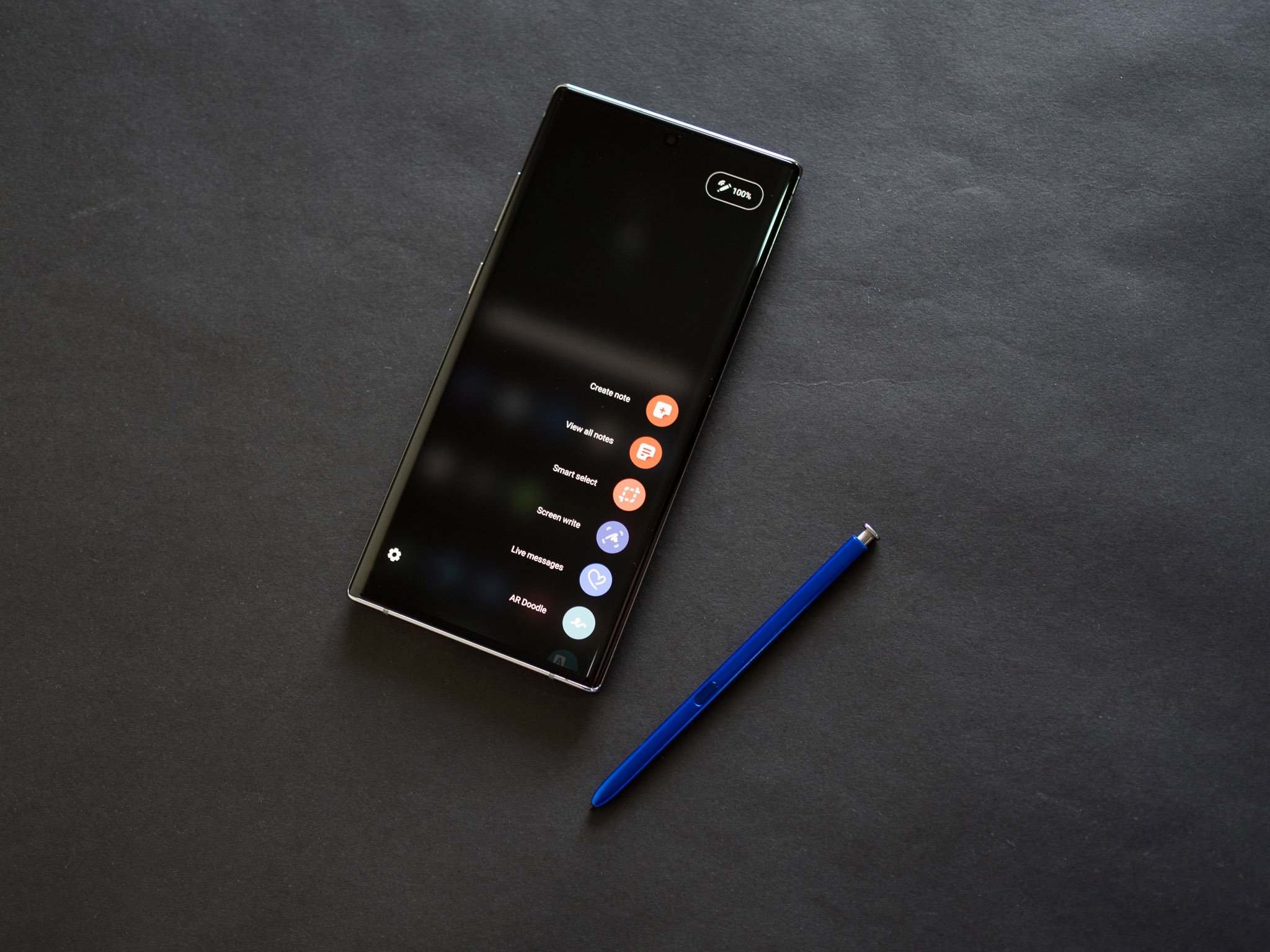

The differentiator for the Note series has been the S Pen, and on the Note 10+ the stylus has picked up even more features. I’ll be honest here; I didn’t use the S Pen with any regularity over the last four months. My usage was limited to two things: using it as a remote shutter button and switching between the front and rear cameras, and taking handwritten notes during product briefings. In both scenarios, the S Pen has worked flawlessly.
Another area that I haven’t had any issues with is battery life. The Note 10+ continues to deliver over a day’s worth of use without fail, and battery life, in general, has been reliable enough that I never had any anxiety about the device running out of juice before the end of the day. What’s particularly great is the fact that it now has 45W fast charging, and even though I routinely used 25W chargers with the phone, I was able to charge the device from flat to 100% in just over an hour, and that was more than enough for my use case.
Rounding out the hardware features is Samsung Pay, which is still the most seamless mobile payments service around. I particularly like the fact that it works with point of sale machines that don’t have NFC, and I routinely miss the feature when switching away from a Samsung phone. Samsung should really license out the feature to other manufacturers, but that isn’t likely given its unique hardware requirements (there’s a specialized coil at the back of the Note 10+ that allows Samsung Pay to use MST).
Finally, we get to the camera on the Note 10+. Samsung hasn’t made any changes from the S10 series, and while the overall image quality isn’t quite as good as the Pixel 4 XL, nor is it as feature-rich as the P30 Pro, it is a reliable workhorse.

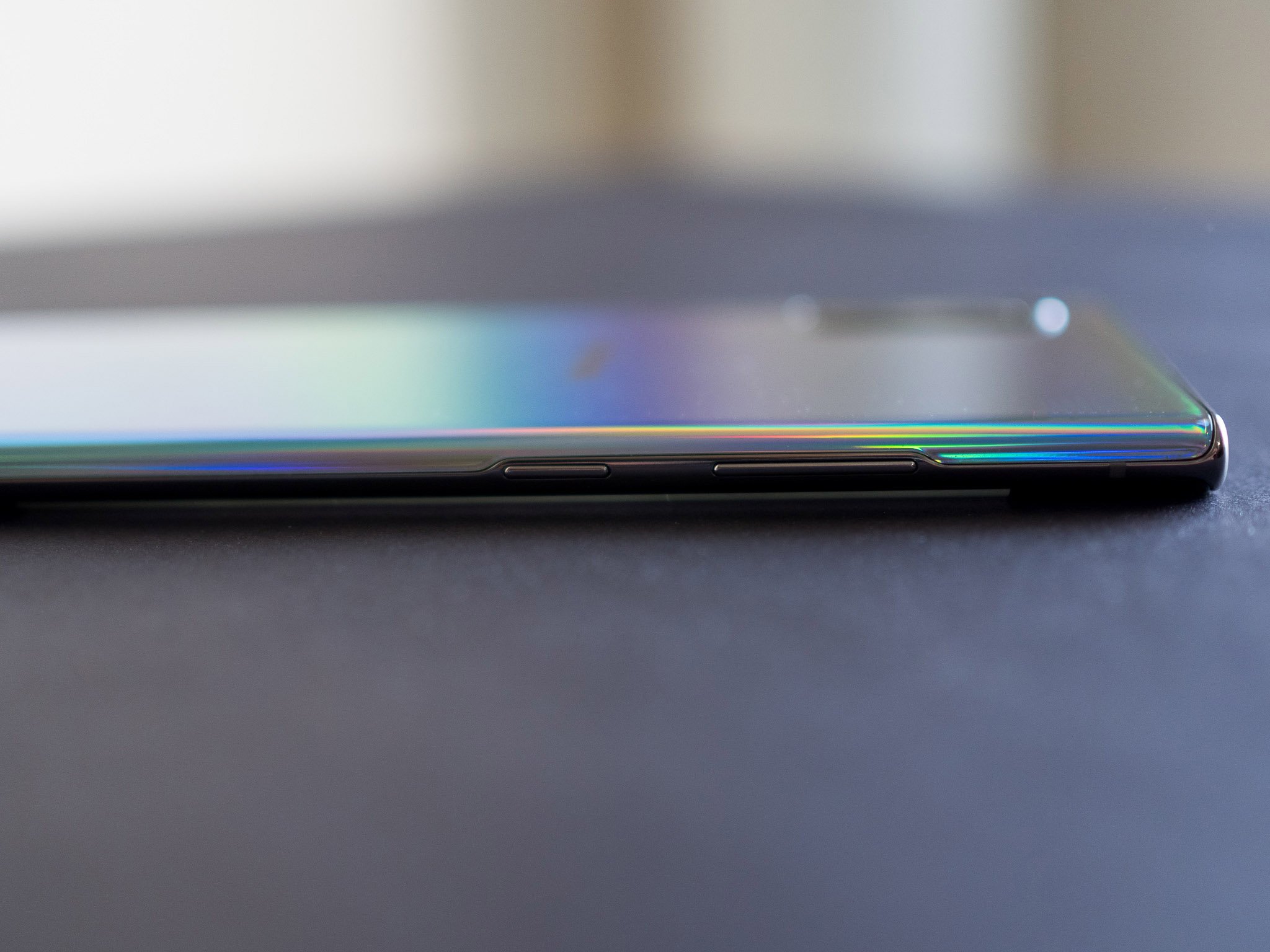

With even Google switching to 90Hz panels, Samsung missed the boat by using regular a 60Hz screen on the Note 10+. A high refresh rate 90Hz panel would have made the device even better, but it looks like we’ll have to wait until the Note 11 for that particular feature to show up.
Samsung needs to stop messing with basic hardware features and leave the power button where it should be: on the right side of the phone.
The only other issue that I have when it comes to the hardware is the positioning of the power button. I finally got used to the button being on the left side, but then I switched to the Pixel 4 XL and it took me a week to realize that the phone doesn’t turn on by hitting the volume down button. I switched back to the Note 10+ and I’m once again realizing just how irritating it is to find the power button on the wrong side of the phone.
I’m also annoyed at the fact that the Note 10+ doesn’t have a 3.5mm jack. Don’t get me wrong; Samsung is far from the only manufacturer that is doing this, but the Note series has always been catered to power users. It is the phone that is meant to have all the features, and it doesn’t make sense for Samsung to omit the analog jack.
There really isn’t any reason for Samsung to remove the jack here; it has been offering water resistance with the jack intact for years, and the battery isn’t significantly larger to warrant the move. But the industry as a whole seems intent on making the switch to Bluetooth, and Samsung is following the pack here. What this means is that if you want wired audio, LG is really the only brand left, but that doesn’t seem like a decent option anymore.

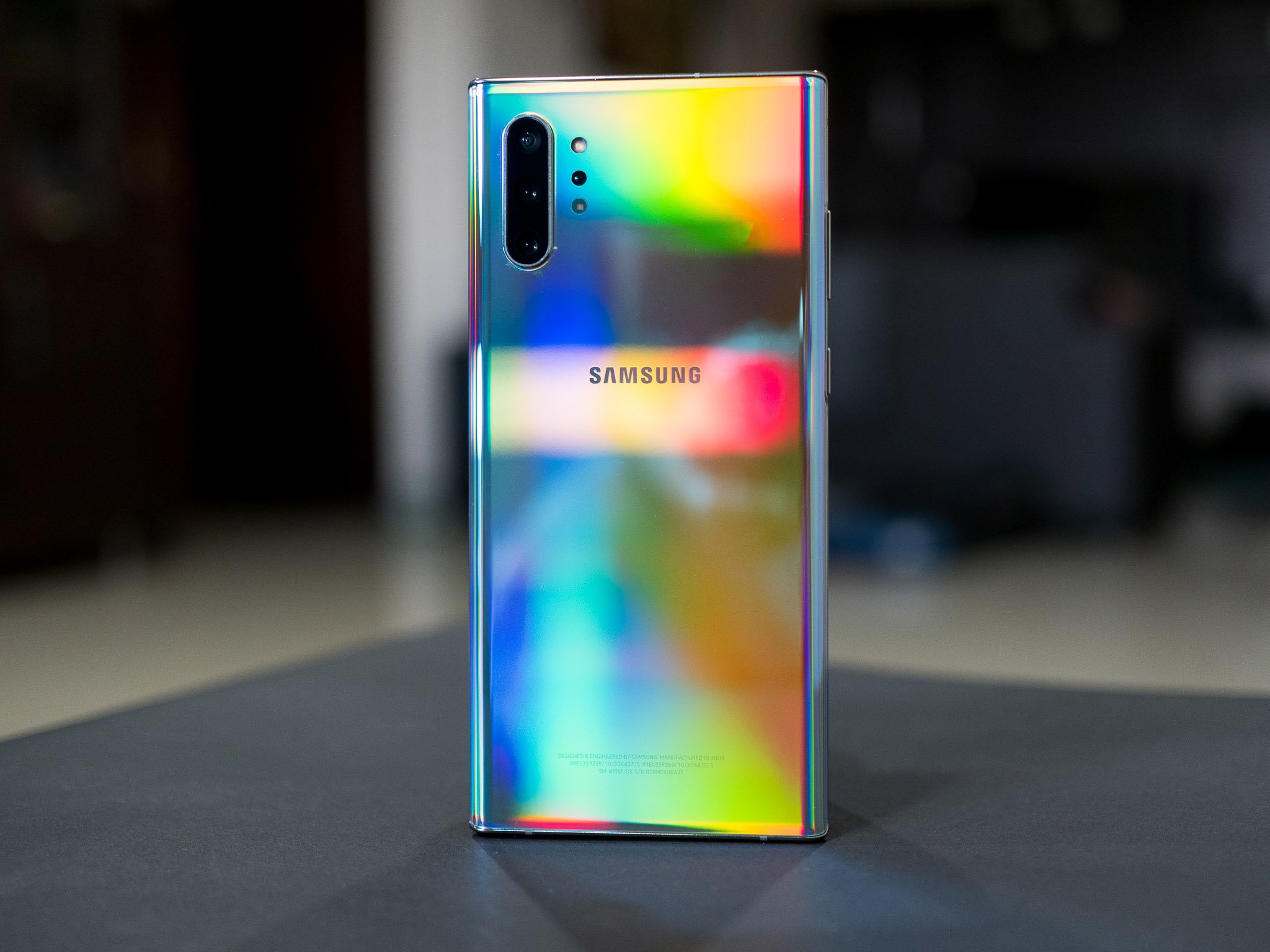

I ended up using a lot of phones in 2019, and four devices have stood out: the Oneplus 7T, Galaxy S10+, P30 Pro, and the Galaxy Note 10+. It’s hard to pick just one, but the fact that Samsung has two devices on the list illustrates just how dominant its phones have become. There was a lot to like both on the hardware and software side of things, and while features like a 90Hz panel would have made it an even more compelling device, the sheer quality of the display makes up for that particular omission.
The Note 10+ is the default option if you’re looking for a flagship in the U.S. Huawei’s current situation with the U.S. government is unlikely to change anytime soon, and Google’s misadventures on the hardware front make the Pixel 4 XL a non-starter. If you want a high-end phone with robust hardware and exquisite display, you’ll have to pick up the Note 10+. One UI 2.0 is the icing on the cake, with Samsung offering exciting new features while making further refinements to its user interface.
Four months later, the Galaxy Note 10+ is one of the best phones available today. The phone has a stunning AMOLED display with vibrant colors, powerful internal hardware combined with generous memory and internal storage, all-day battery life, and fast charging. Then there’s Samsung Pay, the S Pen, biometrics that just work, reliable cameras, and regular updates.
Everything you need from a flagship phone.
The Galaxy Note 10+ has all the features you care about. The large AMOLED panel sets the standard for the industry, the internal hardware is rock-solid, and you get reliable cameras, all-day battery life, and 45W fast charging. Combine that with regular software updates and new feature additions and it’s easy to see why the Note 10+ is one of the best phones around.
We may earn a commission for purchases using our links. Learn more.


London-based Nothing Tech has just launched new earbuds, two pairs, in fact. The Nothing Ear and more affordable Nothing Ear (a) have just gone on sale—you can read Forbes contributor Mark Sparrow’s review of both pairs here. And now, the company has announced a cool new feature: and industry-first integration with ChatGPT. It comes with strings, though.
The new earbuds have just been announced and are available to pre-order from nothing.tech now and go on sale from Monday, April 22. If you’re in London, and you want to be among the very first to get the earbuds, you can snap them up in the Nothing Store Soho a little bit sooner, from Saturday, April 20 (click-and-collect is available).
From launch, the company said, “it will enhance its overall user experience with industry-first ChatGPT integrations in its audio and smartphone products.”
Nothing goes on that it wants “to advance consumer tech products’ transition to AI, as well as simplify and enhance the user experience.”
It means users will be able to pinch the earbud to directly speak to ChatGPT to ask questions and hear responses in the earbuds. Nothing is also introducing new elements to Nothing phones, such as widgets which make it easy to talk to ChatGPT on the handsets. Other features include being able to send screenshots directly to ChatGPT and a clipboard shortcut for sending text.
So, what are the catches?
Although the Bluetooth new earbuds will work with any iPhone or Android phone, and there are dedicated Nothing apps for each platform, the ChatGPT integration is more limited for now.
function loadConnatixScript(document)
if (!window.cnxel)
window.cnxel = ;
window.cnxel.cmd = [];
var iframe = document.createElement(‘iframe’);
iframe.style.display = ‘none’;
iframe.onload = function()
var iframeDoc = iframe.contentWindow.document;
var script = iframeDoc.createElement(‘script’);
script.src = ‘//cd.elements.video/player.js’ + ‘?cid=’ + ’62cec241-7d09-4462-afc2-f72f8d8ef40a’;
script.setAttribute(‘defer’, ‘1’);
script.setAttribute(‘type’, ‘text/javascript’);
iframeDoc.body.appendChild(script);
;
document.head.appendChild(iframe);
loadConnatixScript(document);
(function()
function createUniqueId()
return ‘xxxxxxxx-xxxx-4xxx-yxxx-xxxxxxxxxxxx’.replace(/[xy]/g, function(c) 0x8);
return v.toString(16);
);
const randId = createUniqueId();
document.getElementsByClassName(‘fbs-cnx’)[0].setAttribute(‘id’, randId);
document.getElementById(randId).removeAttribute(‘class’);
(new Image()).src = ‘https://capi.elements.video/tr/si?token=’ + ’44f947fb-a5ce-41f1-a4fc-78dcf31c262a’ + ‘&cid=’ + ’62cec241-7d09-4462-afc2-f72f8d8ef40a’;
cnxel.cmd.push(function ()
cnxel(
playerId: ’44f947fb-a5ce-41f1-a4fc-78dcf31c262a’,
playlistId: ‘aff7f449-8e5d-4c43-8dca-16dfb7dc05b9’,
).render(randId);
);
)();
The earbuds must be paired with a Nothing handset. From today, the feature works with the premium model, the Nothing Phone (2), providing it’s running the latest software. The earlier Nothing Phone (1) and more recent, more affordable model, Nothing Phone (2a) will need to wait for a software update, which Nothing says is “coming soon”.
Also coming in the future is compatibility with earlier Nothing earbuds, that is the Ear (1), Ear (2) and Ear (Stick).
The new earbuds are very keenly priced. Ear costs $149 (£129 in the U.K.), while Ear (a) is $99 (£99 in the U.K.). Both pairs have active noise-cancelling, which is not commonplace at this price point. The more expensive Ear has a wireless charging case and a feature to create a personal sound profile. Both pairs come in black and white finishes, with Nothing’s trademark transparent design in the earbuds and charging case. But the Nothing Ear (a) has an eye-catching extra: a tremendous yellow-finish option.


Growing up in a small neighbourhood in Cameroon, Maeva Che (CivMin PhD student) was aware of challenges of accessing clean drinking water.
“Experiencing that exposure to water issues and challenges with sustainable access to safe drinking water ignited my interest in water treatment,” Che says.
Che’s drive to improve water quality around the globe brought her to the Drinking Water Research Group (DWRG) at University of Toronto’s Faculty of Applied Science & Engineering, where she is researching innovative solutions to address local water issues.
Che is working under the supervision of Professor Ron Hofmann (CivMin), who is a member of the DWRG. Her research focuses on removing unpleasant taste and odour compounds in Ontario’s drinking water by promoting the biodegradation of these compounds through granular activated carbon (GAC) filtration.
The project is supported by a five-year Natural Sciences and Engineering Research Council of Canada (NSERC) Alliance grant called Advanced and Emerging Issues in Drinking Water Treatment.
GAC filtration is a water treatment process that uses granular activated carbon, which is made from organic materials that are high in carbon, such as wood, coal or coconut shells. These materials are heated in the absence of oxygen through a process known as pyrolysis and prompted chemically or physically to produce the activated carbon. The activation enhances the material’s adsorption properties, making it productive to remove contaminants from water.
While GAC filtration is an effective treatment process, its adsorptive capacity is limited. The adsorptive capacity of GAC is expected to become exhausted after about three years in service and drinking water treatment utilities must replace the GAC. Aside from the inconvenience, replacing GAC is costly.
Che is working on alternative ways to remove contaminants using GAC filtration, specifically through biodegradation. When the filtration has been in service for a while, there is the growth of micro-organisms on the GAC, which can be useful for removing contaminants.
“Think of biodegradation as the useful bacteria on the GAC feeding on the contaminants in the water, thereby removing them,” says Che.
“If the GAC has enough good bacteria that is biodegrading the compounds, the GAC may not need to be replaced when its adsorptive capacity becomes exhausted. This can extend the filter’s lifetime, resulting in cost benefits for treatment utilities.”
In other words, biodegradation can potentially enhance the performance of GAC filters.
Che and the DWRG will collaborate with water treatment plants to determine methods that can enhance the biodegradation of taste and odour compounds within their GAC filters.
Currently in its initial phase, the project is taking place alongside the Peterborough Utilities Group’s drinking water treatment plant, where Che is conducting pilot-scale filtration studies with support from the Peterborough Utilities Commission. They plan to extend this research to other partner treatment plants in the future.
Working with various water treatment plants across Ontario, Che will also assess the effectiveness of GAC filters in removing non-traditional taste and odour compounds, which are not commonly monitored.
To achieve this, she’ll evaluate filter performance for two common taste and odour compounds — 2-methylisoborneal and geosmin — and eight additional non-traditional compounds that can cause taste and odour events. This involves collecting GAC and water samples from the plants and conducting lab-scale filtration tests, called minicolumn tests. This test, developed by the DWRG, allows to differentiate between adsorption and biodegradation in GAC filters.
Minicolumn tests provide crucial insights into the performance of the GAC filters in terms of the adsorption and biodegradation of contaminants. To distinguish between these mechanisms, researchers use parallel minicolumns. One minicolumn operates under conditions where the biological activity of micro-organisms is suppressed, which isolates the adsorption process. The second minicolumn operates without biological suppression, allowing both adsorption and biodegradation to occur.
“Many plants are unaware of their filters’ performance for other compounds, aside from the two common ones, that also contribute to taste and odour events in water. Our project, therefore, plays a crucial role in expanding the understanding of this,” Che says.
Project partners include the Ajax Water Supply Plant and the Barrie Surface Water Treatment Plant.
The DWRG is made of approximately 30 graduate students, post-doctoral fellows, research managers and associates who collaborate with local, national and international industry and government organizations to address a wide range of projects related to municipal drinking water.
Che credits her experience as a master’s student with the research group as a major factor in her decision to pursue a PhD at the University of Toronto.
“During my master’s degree with the DWRG, I worked on projects that improved drinking water quality, gaining hands-on experience at treatment plants. Seeing the results of my research reinforced my decision to pursue my PhD here,” Che says.
Ultimately, Che hopes to make a significant impact in the field — and the DWRG provides opportunities to achieve this, with a supportive community of researchers and supervisors.
“My goal is to continue researching and developing sustainable solutions for drinking water treatment that benefit communities in need,” she says.


When Huawei debuted its Mate 60 smartphone in mid-2023, it turned heads around the world after teardown artists found it contained a system-on-chip manufactured by Chinese chipmaker Semiconductor Manufacturing International Corporation (SMIC) using a 7nm process.
SMIC was thought not to be able to build that sort of thing. So while the Mate 60 didn’t differ markedly from every other modern smartphone, its very existence called into question the effectiveness of US-led efforts to prevent advanced chipmaking tech reach the Middle Kingdom.
Much speculation has therefore concerned what Huawei would deliver next, and this week the world got its answer – in the form of the Pura 70.
Chinese media report that early users of the device have posted details of its innards, naming the SoC as Kirin 9010 with four efficient cores running at 1.55GHz, half a dozen performance cores at 2.18GHz, and a couple of high-performance cores zipping along at 2.30GHz. All cores are Arm v8. A third-party spec sheet suggests it’s a 7nm chip – meaning Chinese chipmakers appear not to have made another unexpected advance.
Early tests suggest it outperforms the Kirin 9000 found in the Mate 60, but independent assessments are yet to emerge. The crowdsourced evaluations currently available are sometimes dubious.
What we can say with confidence is that the Pura 70 has a 6.6-inch OLED display with 120Hz refresh rate and resolution of 2,760 x 1,256. It has 12GB RAM aboard, and buyers can choose from 256GB, 512GB, or 1TB of storage.
The three rear-facing cameras on the base models can capture 50, 12, and 13 megapixels apiece.
The Pura range derives from Huawei’s P-Series handsets that stretched from the midrange to the low-end of premium, but are now focussed – pardon the pun – on photography enthusiasts. The device comes on four variants, each priced to match the four editions of Apple’s iPhone 15.
The screen on the high-end “Ultra” model grows to 6.8 inches and 2,844 × 1,260 pixels, with two rear cameras that shoot at 50 megapixels and one at 40. One of the 50MP snappers is retractable, to enhance its zooming powers.
Importantly, all models of the Pura 70 run HarmonyOS 4.2 – Huawei’s not-Android operating system.
China is all-in on HarmonyOS as the nation pursues indigenous alternatives to Western tech. In recent weeks Chinese media and government agencies have noted the growing proliferation of native HarmonyOS apps, trumpeting that developer enthusiasm for the platform means local buyers now have a more patriotic alternative.
That alternative appears to be welcome: after the debut of the Mate 60, analyst firm IDC saw Huawei’s smartphone market share improve by 36.2 percent. ®
DJT Stock Rises. Trump Media CEO Alleges Potential Market Manipulation. – Barron's
Trump Media alerts Nasdaq to potential market manipulation from 'naked' short selling of DJT stock – CNBC
Private equity gears up for potential National Football League investments – Financial Times




2024 Stanley Cup Playoffs 1st-round schedule – NHL.com
Botched home sale costs Winnipeg man his right to sell real estate in Manitoba – CBC.ca
Enter the uncanny valley: New exhibition mixes AI and art photography – Euronews




Toronto reports 2 more measles cases. Use our tool to check the spread in Canada – Toronto Star
Gas prices see 'largest single-day jump since early 2022': En-Pro International – Yahoo Canada Finance